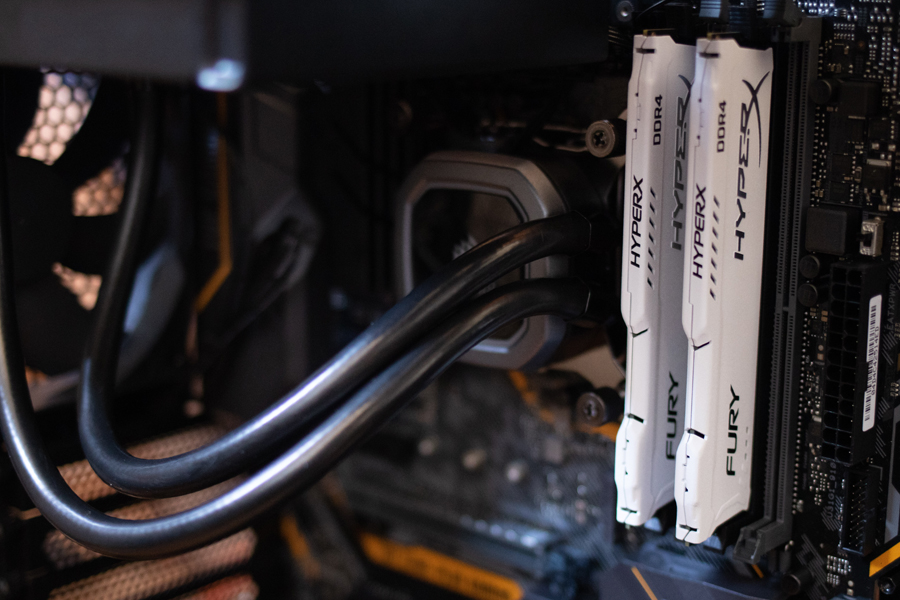The Difference Between Primary And Secondary Memory

Image Source: Pexels
There are two types of computer memory: Primary and secondary memory. Though their functions are necessarily the same, how do they differ?
Primary memory is the main memory used by a computer and is accessible by CPU. Secondary memory is an auxiliary memory that is typically much larger than the primary memory.
Many features define primary and secondary memory systems. Exploring these features will provide a more comprehensive understanding of the two types of memory and how they differ.
What is Memory?
Computer memory functions just like human memory. Memory is used to store miscellaneous data and instructions for later use. Each type of memory is divided into small sections known as cells. Each cell within memory has a unique address and size.
Computers typically use two forms of memory.
What is Primary Memory?

Image Source: Pixabay
The main memory source for any computer system is the primary memory. The primary memory is the internal memory system of the computer. It takes very little time to access data from the primary memory.
Data in the primary memory is volatile. If the data is not saved correctly, and a power outage occurs, that data is lost. The storage capacity of primary memory systems is far less than that of secondary memory systems, and they are far more expensive.
There are two types of primary memory.
RAM
01
Random Access Memory, colloquially known as RAM, is temporary or cache memory. This type of memory is lost when a computer unexpectedly powers off.
ROM
02
Read Only Memory is the permanent form of primary memory. The information stored within the ROM is installed by the computer manufacturer and is not accessible to the user.
What is Secondary Memory?

Image Source: Pixabay
Secondary memory is also known as external memory. Secondary memory is typically contained within a storage device which exists outside of the computer hardware. Secondary memory systems come in many varieties, sizes, and types.
Secondary memory storage devices tend to have more significant storage space available, in addition to being far less expensive than internal, primary memory systems. For these reasons, external secondary memory storage devices have become incredibly popular. They allow users to store massive amounts of personal information and media on an external device.
As mentioned above, secondary memory comes in many shapes and sizes.
Magnetic Disk Memory
01
An example of a magnetic disk used to store secondary memory is a floppy disk. Though they are not used as frequently or popularly as they were in the ’90s, they remain an inexpensive solution to storage woes.
Unfortunately, most floppy disks are not capable of storing such information. Their size limits are relatively small, especially when considered to typical file sizes today. What might have been able to save dozens of documents in 1995, can now barely contain a single JPEG image.
For this reason, floppy disks have fallen out of fashion.
Optical Drives
02
Optical drives are still popular, but they too are beginning to go the way of the floppy disc. Optical drives include CDs, DVDs, and Blu-ray Discs. These forms of storage can store an enormous amount of information.
While a quality floppy disc may be able to hold a little over 1 MB of data, a single blank Blu-ray disc can hold more than 1 TB of data.
03
UBS DRIVES
The most convenient of the secondary storage methods, USB drives are small enough to fit into your pocket. They are easily rewriteable and can store up to 1 TB of data, making them a fit competitor of optical drive solutions.
The increase in the storage capacity of USB drives, coupled with the rise of SSD storage, has contributed to the decline of optical drive secondary storage.
SSD
04
A Solid State Drive is the most popular method of achieving secondary memory. SSD storage devices retrieve data incredibly quickly and can store 5 TB of data or more. SSDs are also becoming less expensive, which allows a more significant number of people to invest in getting one.
What is the Difference Between Primary and Secondary Memory?
It is difficult to express the difference between primary and secondary memory, solely because there is more than one difference between the two types of memory.
If you were to remove the essential function of computer memory, these two systems would seem completely different from one another. Let’s take a comprehensive look at primary and secondary memories.
CPU Access
The CPU can access primary memory.
The CPU can not access secondary memory.
Type of Memory
Primary memory is also called main memory.
Secondary memory is referred to as auxiliary memory.
State of Storage
Primary memory contains data which is being currently processed. Unsaved data in the primary memory is lost when power is lost.
Secondary memory is stored data. Power outages do not affect secondary memory.
Volatility
Primary memory is highly volatile.
Secondary memory is not volatile.
Composition
Primary memory is made of superconductive material.
Secondary memory is made of magnetic and optical material.
Access Speed
Typically, primary memory data is quickly accessed.
Secondary memory data may take longer to access than primary memory data, depending on the device used.
Memory Capacity
Primary memory storage capacity is small.
Secondary memory storage capacity is enormous, typically double if not triple the size of primary memory storage.
Cost
Primary memory can be costly.
Secondary memory is far less expensive than primary memory.
Internal Versus External
Primary memory storage is located internally within your computer or device.
Secondary memory storage is typically referred to as an external storage device, as it is not housed within the hardware of a computer.
Which Form of Memory is Best?
Now that we have explored the difference between primary and secondary memory, we can sincerely say that neither is better than the other.
Both primary and secondary memory have their specific functions and usages and are crucial to maintaining a properly functioning computer.
However, for those seeking a higher storage capacity, the budget-friendly option will always be a secondary or external storage drive.
